Home » Quail Species » Bobwhite Quail Hunting » A Guide to Wild Bobwhite Quail Hunting
A Guide to Wild Bobwhite Quail Hunting
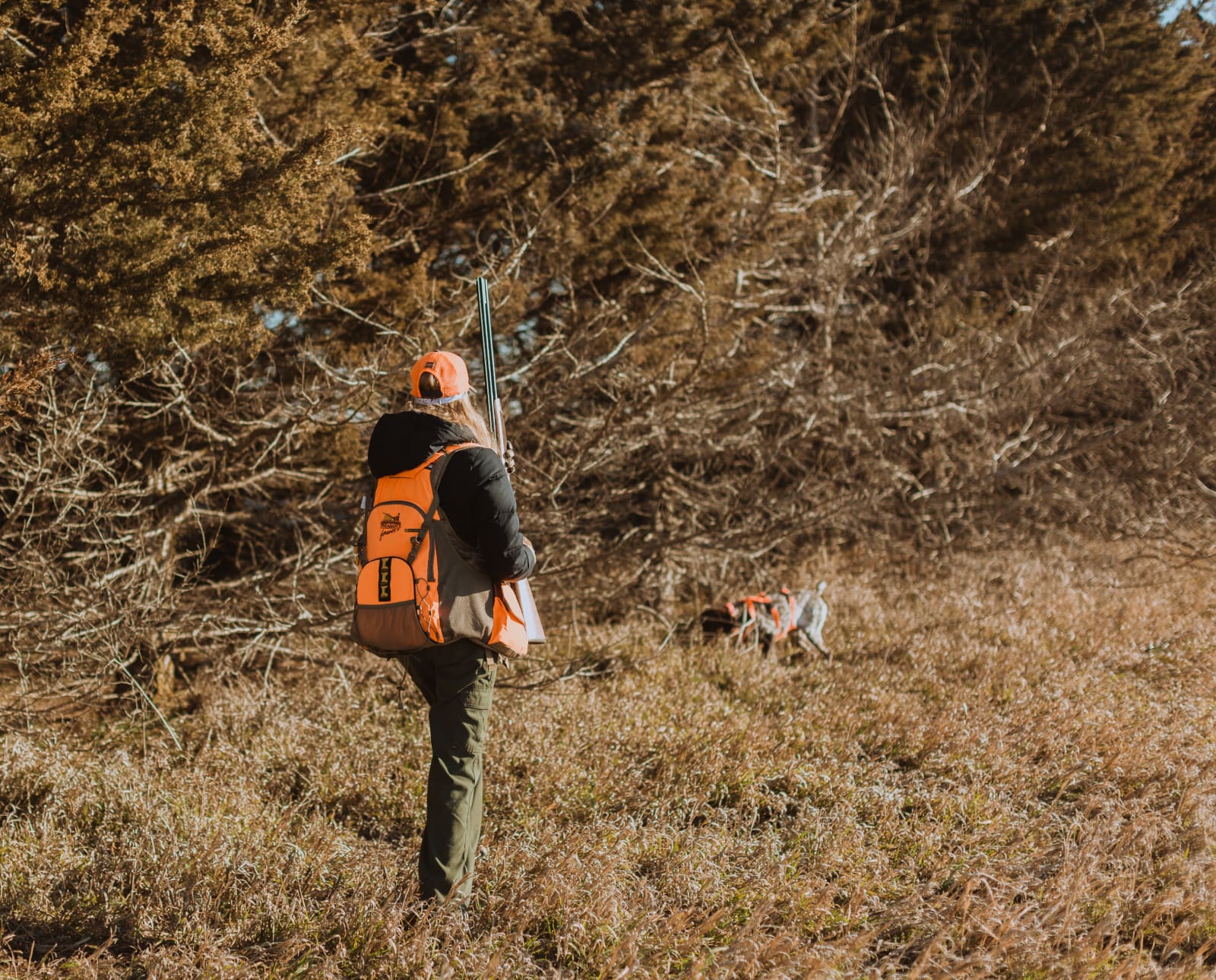
Raised in the upland bird mecca of Kansas, the passion…
Best practices for preparing and planning your public land bobwhite quail hunting this season
Each hunting season, I can be found trudging across public land in Missouri and Kansas in pursuit of my favorite game bird: bobwhite quail. Anyone who has ever had a covey rise from beneath their feet can attest to the distinct sound made by the explosion of these small brown and white birds. It’s a sound I’ve heard hundreds, maybe thousands of times, but it never gets old. For some hunters, public land is their only opportunity to experience the thrill of a covey rise.
Listen to more articles on Apple | Google | Spotify | Audible
Wild bobwhite quail can be found from Texas, north to portions of South Dakota, east to Maryland, south to Florida, and within most states that lie inside that box. They live in various habitats across their broad range, making them the most widespread of the six huntable quail species in the United States. These states vary in the amount of public land available to quail hunt, but every state within the bobwhite’s range has some publicly accessible coveys for die-hard uplanders to pursue.
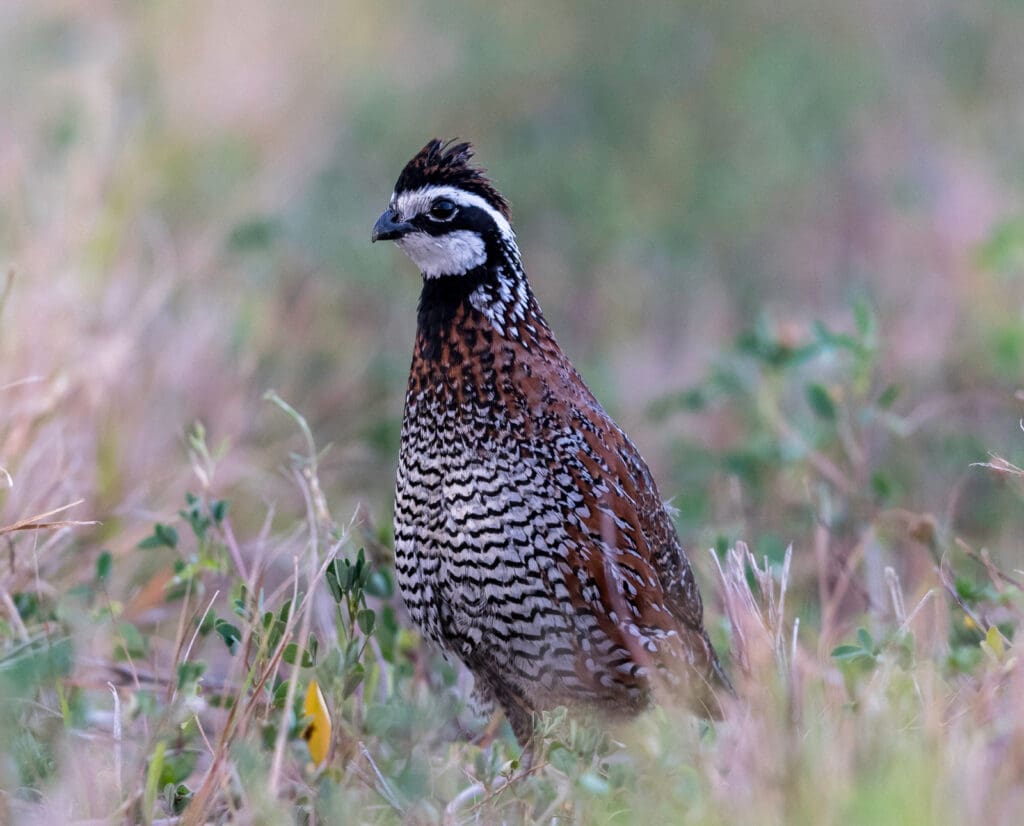
Where Should You Go To Hunt Public Land Bobwhite Quail
Despite steep population declines across much of their range, there are three primary strongholds for wild bobwhite quail. They are Kansas and Nebraska, Georgia and Florida, and Oklahoma and Texas.
Bobwhite Quail in Kansas and Nebraska
Bobwhite quail have done well across Kansas and Nebraska the last few years due to favorable weather conditions. The 2022 drought slowed down quail production, but extensive native quail habitat occurs across much of these two states. This native habitat has sustained relatively stable populations on both public and private lands over the last decade. Fortunately, both these states offer thousands of acres of both state-owned wildlife areas and private lands that are open to public hunting through walk-in hunting programs.
Bobwhite Quail in Georgia and Florida
Bobwhite quail thrive along the state line between these two habitat-rich states. Pine plantations are the norm; many are managed primarily for bobwhite quail. The populations in areas where multiple plantations are managed within close proximity often produce the highest densities of bobwhites in the country. However, the vast majority of these areas are on private land. There certainly are some public areas to harvest quail down south, but the opportunities are not what I would call endless.
Read: How to Find Public Quail in the South – Public Land Quail
Bobwhite Quail Oklahoma and Texas
These two brushy, drought-ridden states have monster peaks and deep valleys in their quail production graphs. When rainfall is plentiful, so is the herbaceous cover bobwhites so desperately need to nest and raise their broods. Coveys dot the landscape whenever there is abundant weedy cover in Oklahoma or Texas. But when Mother Nature turns off the tap, these states dry up quickly and look like a scene from an old western. Sand, cacti, and some scattered brush are all that remain, and the quail population quickly declines.
Most of the hunting in Texas is tied up in leases on private land. There are a handful of state-owned wildlife areas where hunters can find wild bobwhites. Oklahoma is typically a more common destination for public land hunters when populations are good due to more public places to pursue them.
Other States to Hunt Bobwhite Quail on Public Land
Many quail are harvested on public land across other states within their range. Iowa, Missouri, and Alabama have aggressive public land quail programs, and numerous public wildlife areas are sprawled across each state. Many of these public lands still hold huntable populations of quail. Other states, like Kentucky and Arkansas, have spent considerable time and money sustaining quail populations in a few key public areas.
Make no mistake, though, pursuing bobwhite quail anywhere on public land is hard work. Even a prime year in Oklahoma can yield dry, windy hunting conditions by the time the season arrives, making scenting conditions difficult and birds more likely to run than fly. Hunters can expect quail to quickly become educated and increasingly elusive in Kansas on a banner hatch year, especially as the season progresses.
Read: Finding Bobwhite Quail on Public Lands Through the Season
What Should You Take Public Land Bobwhite Quail Hunting
Like any outdoor pursuit, some gear is necessary, and other gear is just nice to have. Here are the essentials for public bobwhite quail hunting.
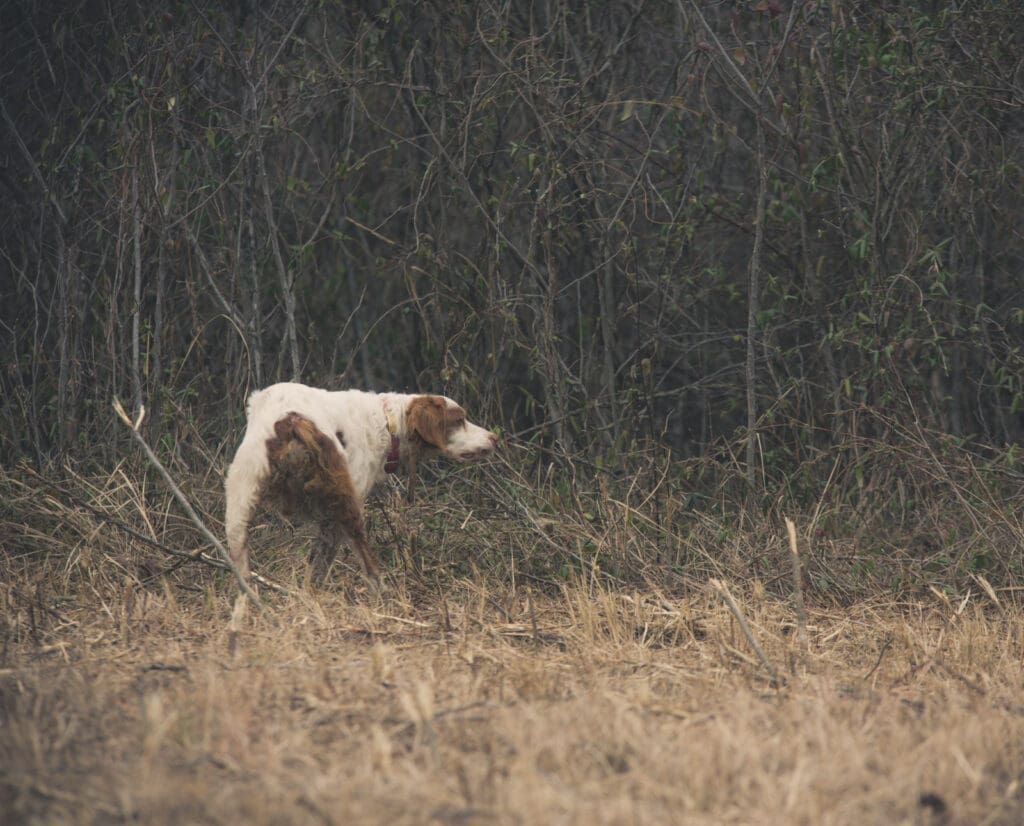
A Quail Dog
This is non-negotiable. Yes, plenty of bobwhite quail have been killed without a dog, but watching a seasoned dog work a covey of quail and subsequent singles is magical. That alone keeps most quail hunters in the game until they are too old to push any further.
Additionally, not only is finding quail without a dog quite difficult, the likelihood of losing downed birds rises exponentially. I consider every wild bird such a prize that it turns my stomach whenever I lose a bird.
I have never had an allegiance to any specific breed, but I certainly prefer pointing dogs over flushing dogs for quail. Now, all you flusher owners, don’t send me hate mail; I have no issue with anyone’s choice of dog. I just find the staunch point of an English Setter or German Shorthaired Pointer irresistible. Throw in a high-tailed English Pointer honoring the staunch point, and I’m in heaven.
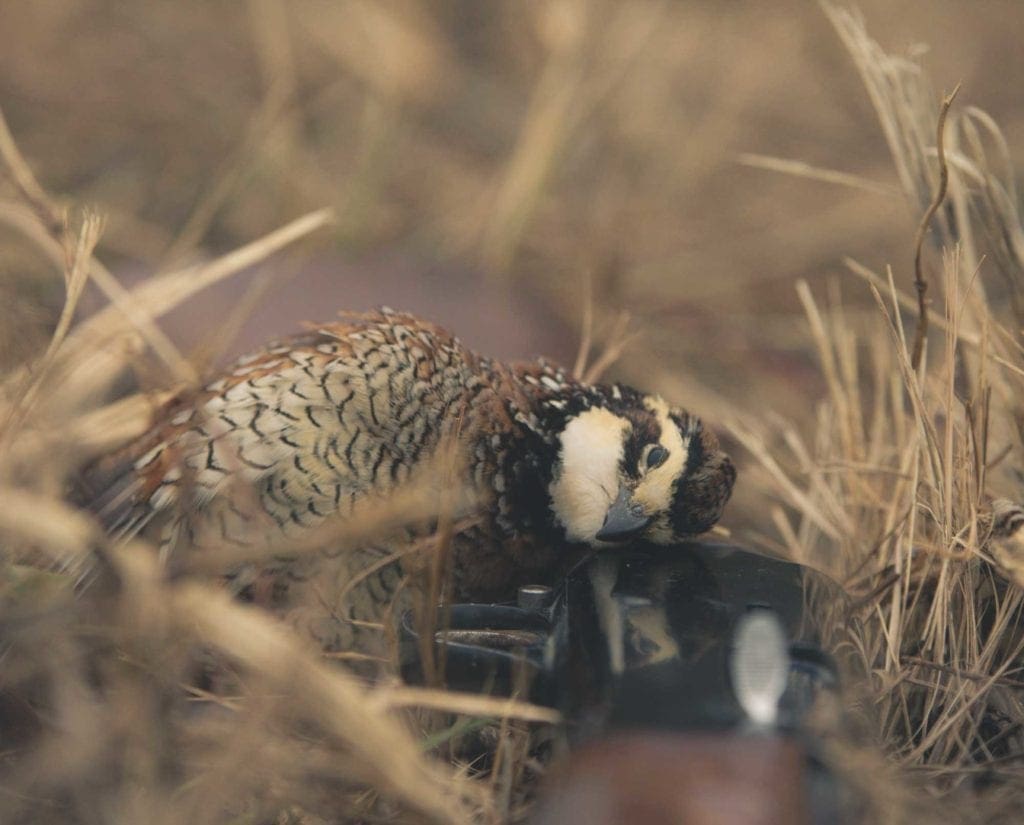
Shotguns for Bobwhite Quail
Any size from a .410 up to a 12 gauge is acceptable, although the 28 gauge probably harvests the most bobwhites. Here is some data from Project Upland’s annual community survey describing the types of shotguns bobwhite hunters preferred in 2022.
| Shotgun Gauge | Percent that hunters preferred said gauge and hunted bobwhite quail |
| .410 bore | 18.75% |
| 28 gauge | 39.26% |
| 20 gauge | 27.61% |
| 12 gauge | 20.41% |
An improved cylinder choke is typically preferred, but I often shift to a modified shotgun choke later in the season as birds get wise and shot distance increases.
Ammunition for Bobwhite Quail
Lead shot sizes of 7, 7.5, and 8s are usually the standard. Steel 6 or 7 shot work fine, too, and should be considered by hunters concerned with lead being deposited across the landscape. Furthermore, some public areas require non-toxic shot, and steel shot is the most reasonably priced option.
Quality Hiking Boots for Quail
There is no longer a covey every 100 yards like my father enjoyed in the 1950s. A six-covey day on public land is a great day afield in most cases. It’s not unusual to cover two miles per covey rise on the average public land hunt. Plan to put some wear and tear on the soles of your boots if you want to find public land bobs consistently.
Using Maps for Quail Hunting
Old-school paper maps, OnX, Google Earth, Basemap, or whatever map you use will work. View aerial maps to find public areas with likely habitat. Scout those areas before the season, if possible. If traveling out of state, call the local biologist in the counties you intend to hunt and ask for information. Don’t expect exact property information, let alone specific fence lines to hunt. However, you can usually get a general idea about the population, hunting pressure, and expectations for hunting some of the more extensive publicly owned tracts.
Read: How to Identify Bobwhite Quail Habitat in Different States
What Should You Expect When Hunting Quail on Public Land
In most cases, public lands contain more acres of usable habitat than a typical private parcel of similar size. This extensive habitat helps produce quail consistently and allows the coveys to occupy several locations across the wildlife area. This often makes these coveys less predictable.
One day, your tri-colored setter might stick a covey in a plum thicket positioned along the edge of a milo food plot. A week later, there may be no sign of any birds around the plum thicket, but you flush a covey 400 yards away in a weedy old field. Was it the same covey? Maybe. Probably; who knows? The point is bobwhites can use several hundred acres and move quite a bit throughout the season. Even though public land may hold more birds per acre, they may be harder to find due to the expansive habitat.
Understanding Bobwhite Quail Behavior
Public land bobs are usually considerably wilder than their relatives residing on private lands. Typically, the pressure is higher on public land, and quail quickly adapt and adjust their behavior. They often run rather than get pinned down by the first dog that catches their scent in the fall air. Experienced dogs will eventually corral them, but it might be more than 100 yards after the pursuit begins.
Highly pressured birds will sometimes flush wild, well out of gun range. They typically fly 100 yards or less when flushed, but this distance can easily double or even triple as the season progresses. Wherever they go, it’s important to watch them until they land if you can. Hunting singles is often the most successful way to ensure a fine dinner of roasted quail in the future.

The Covey Rise
Before a covey erupts, they have already determined their escape route. Most of the time, they will head towards some type of woody cover. A draw, fencerow, brush pile, or scattered thickets are ideal landing zones. Some public land bobwhites learn to fly into the thickest, nastiest brush or timber within flight distance, where singles are hard to find.
Knowing these tendencies can help hunters positions themselves for the best covey rise shot opportunities. The hunting party can come closer together near the point but should stay in a line to ensure safe shooting. Trying to approach a point to push birds away from their likely flight path usually results in birds blasting back over and between the line of hunters, making for difficult shots. Accept the predicted flight path and approach in a direction that will likely yield straightaway shots.
How Does Wind Affect Bobwhite Quail Hunting?
Wind can make or break a quail hunt. A light breeze is ideal to provide a direction to work the dogs; into the wind, of course. The covey will have a scent cone wafting downwind through the crisp fall air, providing a significant advantage to any self-respecting bird dog to pinpoint the covey’s location. On the other hand, strong winds blow out scent cones, making dog work difficult, and the quail become extremely nervous. Unless I’m on an out-of-state trip, I avoid hunting in high winds.
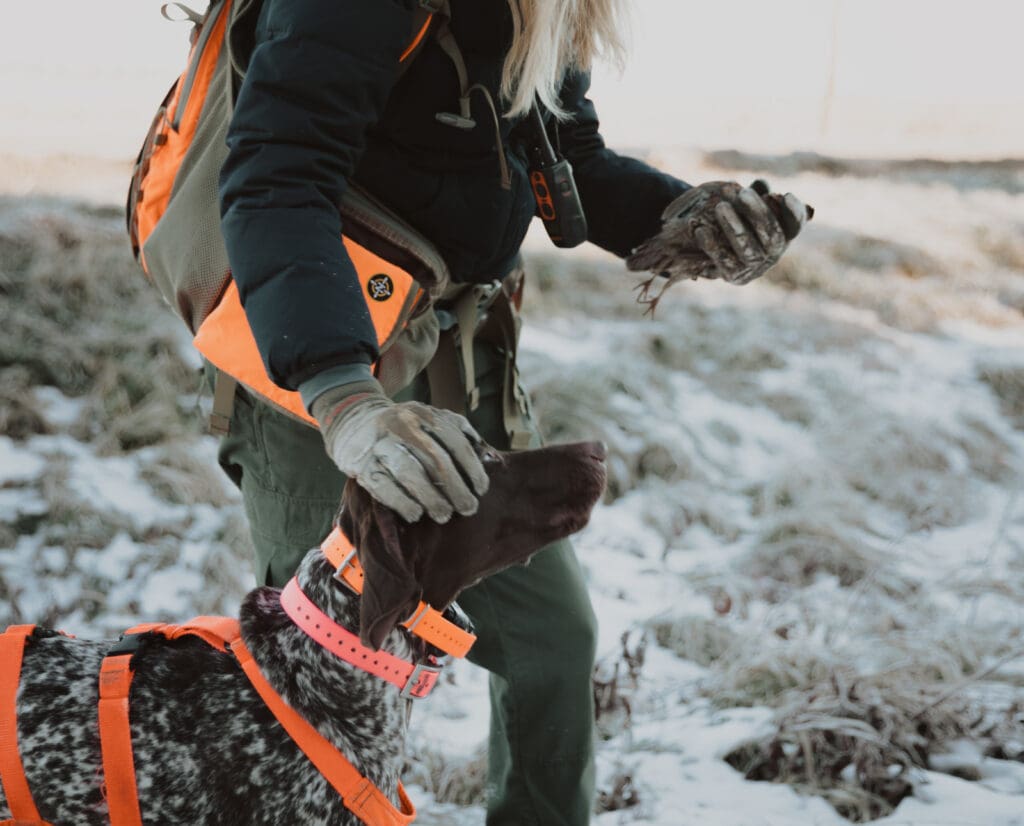
How Does Snow Affect Bobwhite Quail Hunting?
Snow makes quail tracks readily visible, informing the hunter that a covey is in the neighborhood. I often follow tracks until I finally catch up with the covey, which can be anywhere from a short distance to hundreds of yards, depending on how long it has been since the covey left its roost site. Deep snow or snow with a hard crust on top will hinder the hunter and favor the quail’s escape.
How Moisture Affects Bobwhite Quail Hunting?
As mentioned previously, drought can make scenting conditions nearly impossible. On the flip side, rain knocks bird scent down and suppresses the birds’ desire to fly since they don’t like to get their feathers wet. Hunting on rainy days rarely results in a heavy game bag.
Public Land Bobwhites Are Challenging Yet Rewarding
Every fall brings anticipation as I await the opening day of bobwhite quail season in Missouri. I start each season hunting public lands that I have managed for twenty years. There are typically several other hunters afield. I yield to the portions of the area other hunters have claimed and find undisturbed spots to follow my dogs. I only recall shooting one opening day limit on public land over the last two decades. A heavy game bag has never been my opening day expectation.
On the other hand, I only recall one opening day that resulted in zero covey contacts. A few coveys forced into flight, a few points and retrieves to satisfy my dogs, and a stroll across a few hundred acres of public land is what I usually experience. If you don’t have access to private land bobwhites, take some time this season to find some nearby public land options. If you live in a state where public land bobs don’t exist or are very rare, plan a road trip. You probably won’t fill the freezer, but you will set foot on some new territory, watch your dogs work into the wind, and never forget the sound of the covey rise.
Raised in the upland bird mecca of Kansas, the passion for upland birds was born at a young age for Kyle Hedges. He has now spent over 25 years managing upland game habitat on public lands in Kansas and Missouri for State Conservation Agencies. He also works as a Habitat Consultant for Land and Legacy, assisting landowners across the country with improving their properties.


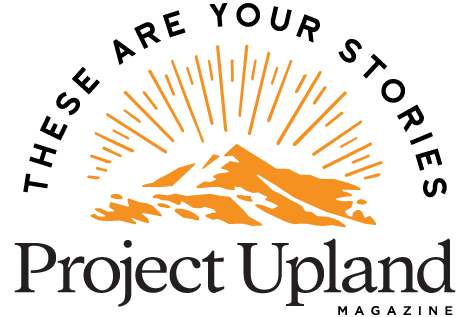

Amen, to the last paragraph! In areas where bobs are scarce to begin with, go easy on chasing singles. Not everyone will, so its good for the ethical hunter to take the high road and protect the gains that have been made by many of our state wildlife agencies and non-profits habitat groups.
Great article!
Jon, thanks for the kind words. It’s hard to stop shooting when the action is fast and fun, but ashunters we need to show restraint when it’s needed especially if it will affect bird populations and survival.
Good article and tips Edgar, I often forget about just stopping to listen. And as Jon and you said leave some birds for the future! I have made it a rule of thumb to not hunt a known covey area more than once a year if I have put up birds. lower the pressure, besides half the fun is finding new coveys! One tip I was told years ago is, on the initial covey flush pick out the last bird to flush. Allows for some of that initial rush or panic to die down and you could possibly be taking the weaker covey members.
In my experience over the last several years here in Northeast Alabama I have started looking for the type cover I hunted growing up then locate the nearest cover that would be considered “woodcock” cover and typically that is where I have found the covies I have found especially over the past 6 years.
That’s good to know and hope others see the relation.
I have learned over the years of hunting these little guys are when you think you have figured them out they will throw a monkey wrench in the mix and completely throw you off. I guess that is what I love about hunting them.
On another note I have to agree with last statement also. I will only shoot 1 or 2 out of a covey and leave them alone the rest of the season. I quit hunting them after 3 in the afternoon so they can covey back up for the night.
James, If the covey is big, meaning at least 15 or more then I will take no more than three. Coveys of 20 or more then I don’t have a problem working singles and taking at least four then moving on. Now, this past 2019 season the first covey we busted had well over 20 birds. However upon the birds being retrieved we noticed they were VERY young of the year birds. Hardly any coloration and difficult to determine sex. We opted to stop working the covey. Self restraint and always thinking about conservation.